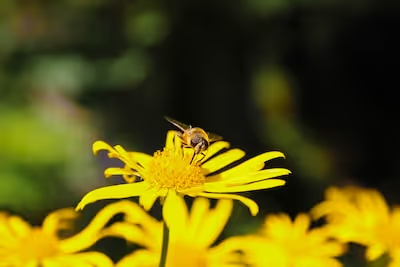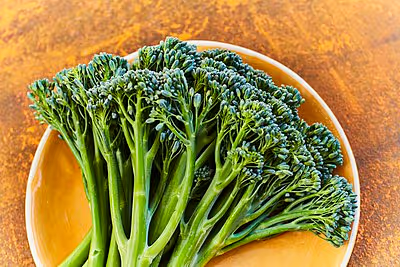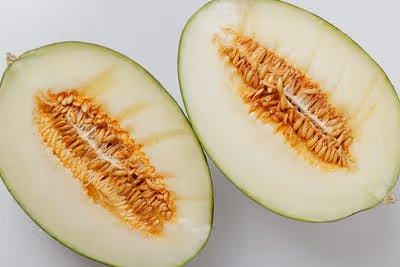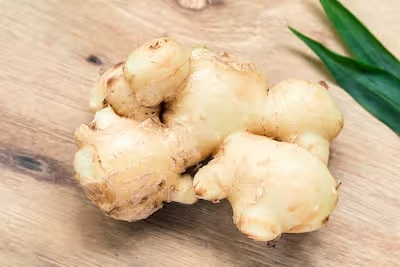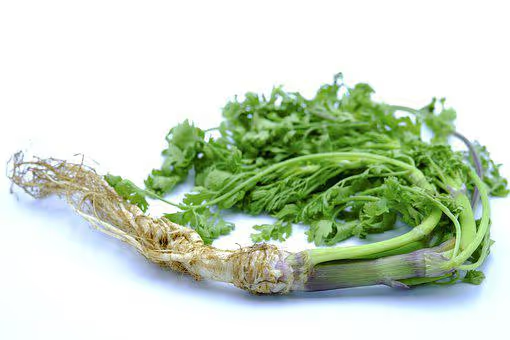Growing Goji Berry for Health, Beauty, and Garden Appeal

Growing Goji Berry
Growing Goji Berry at home starts with choosing a sunny spot, sandy soil, and regular pruning. Originally from Asia, this resilient shrub thrives where summers blaze and winters bite. Packed with vitamins and antioxidants, cultivating your own goji berry plants grants you fresh snacks and flavorful additions to dishes—read on for practical tips to make your harvest happen.
Cheatsheet: Goji Berry Planting & Boosting Backyard Wellness
🌱 Varieties & Planting
- Chinese (Lycium barbarum)—most common for fruit
- Start: Seeds or cuttings; best in spring
- Zones: 5–9 (–20°F/–29°C winter hardiness)
- Plant in full sun, space 5 ft (1.5 m) apart
🌿 Soil & Watering
- Loamy, well-drained, pH 6.5–7.5
- Mulch to retain moisture
- Water weekly: 1–2" (2.5–5 cm), more if hot
☀️ Feeding & Pruning
- Compost or slow-release balanced fertilizer in spring
- Prune in winter for shape & airflow
- Remove root suckers
🍇 Harvest & Use
- First berries: Year 2
- Harvest when deep red, late summer–fall
- Use fresh, dry, or in teas & smoothies
🌺 Garden Impact
- Drought-tolerant
- Delicate purple blooms attract pollinators
- Hedge or edible ornamental
💪 Health & Nutrition
- Vitamin C: 500 mg per 100g dried berries
- Rich in iron, antioxidants, beta-carotene
- Supports immunity, skin radiance, vision
🧰 Tools and Products You'll Need
- Shovel/trowel
- Pruners
- Mulch
- Organic fertilizer
- Compost
- Support stake (if windy)
🔄 Step-by-Step
- Soak seeds overnight, sow in seed tray; transplant sturdy seedlings outdoors after frost risk passes
- Dig hole 2x pot width, amend soil with compost
- Plant rootball at ground level, backfill, firm soil
- Water deeply, mulch base 2–3" (5–8 cm)
- Fertilize in spring, prune old wood during winter dormancy
- Harvest ripe berries gently to avoid bruising
-
Growing Goji Berry for Health, Beauty, and Garden Appeal
I started Growing Goji Berry along a sun baked fence where tomatoes sulked and the wind never minded its manners. The shrubs shrugged it off, flowered purple, and filled bowls by late summer.
They earn their keep three ways. Fruit for the kitchen, soft violet bloom for pollinators, and a willowly silhouette that drapes trellis wire like jewelry.
Know your plant: Lycium barbarum vs. L. chinense
Goji is the common name for two wolfberries, Lycium barbarum and L. chinense, both in the nightshade family. Most garden varieties are L. barbarum with sweeter fruit and heavier crops.
They are self fertile shrubs that fruit on current season wood. That detail guides pruning and explains why strong new shoots pay dividends.
Site and soil that keep goji happy
Give full sun, at least 6 to 8 hours, and moving air to dry leaves after rain. Soil should drain freely with a pH near 6.5 to 7.5, though they tolerate a wider range.
I plant on slight mounds or raised beds where clay holds water. Roots dislike wet feet, and saturated soil invites root rots.
“Goji favors well drained, moderately fertile soil and full sun. Overwatering and excess nitrogen lead to rank growth and poor fruiting.” Oregon State University Extension1
Planting, spacing, and trellising
Set bare root or container plants in spring once soil warms to 50 F or 10 C. Space 5 to 8 feet or 1.5 to 2.5 meters apart if free standing, closer if trained on wires.
I run two wires at 2 and 4 feet or 60 and 120 cm on T posts. Tie new canes loosely and clip off suckers where you do not want a thicket.
Water and nutrition, without the bloat
Water deeply once or twice a week during establishment, about 1 inch or 25 mm total, then ease off as roots reach. Drought reduces berry size, but constant wet invites disease.
Feed lightly. I topdress with compost in spring and stop chasing lush growth with high nitrogen fertilizers, which pushes leaves instead of berries.
Pruning that boosts fruit
Year one, choose 3 to 5 sturdy leaders and tip them at chest height to trigger laterals. In winter, thin crowded wood and keep an open center that sunlight can pour into.
In summer, head whippy shoots at 12 to 18 inches or 30 to 45 cm to spur flowering laterals. Remove weak, crossing, or older unproductive stems and any suckers beyond the footprint.
Bloom, pollination, and set
Small lilac flowers show from early to midsummer and bring bees in droves. Plants are self fertile, yet I see heavier set when two genetically different gojis grow within 20 feet or 6 meters.
Cold snaps can nip early flowers, so late frosts may trim the first wave. Later flushes usually make up the difference.
Harvest, handling, and flavor
Pick when the berries glow true red and soften slightly. Unripe green fruit tastes harsh and can upset the gut, so I let color and give be the guides2.
Fresh goji tastes sweet tart with a faint herbal note. I eat them out of hand, dehydrate at 115 F or 46 C until leathery, or freeze on trays for smoothies.
“Mature shrubs under extension trials yielded several pounds of fruit per plant per season, depending on training and irrigation.” Utah State University Extension and OSU Extension1,3
Why gardeners prize goji for health and beauty
Goji berries carry carotenoids like zeaxanthin, the pigment linked with eye health, along with vitamin C and polyphenols that support normal antioxidant defenses4,5. Leaves brew into a mild spinach like tea in many kitchens.
I notice the skin payoff most in late summer, when sun and soil dry me out. A handful of dried goji with yogurt feels like insurance while the shrub keeps the border lively.
One caution. Case reports describe interactions between goji and warfarin, with elevated INR readings, so folks on anticoagulants should talk to a clinician before adding goji regularly6.
Common problems and my field fixes
- Powdery mildew: Improve airflow, water in the morning, and avoid overhead irrigation. Use sulfur or potassium bicarbonate sprays if needed, applied per label.
- Leaf spots and blights: Remove fallen leaves, mulch, and rotate to drip irrigation. Copper can help in wet seasons.
- Spider mites, whiteflies, aphids: Hose off early, introduce lacewings or lady beetles, and use horticultural oil on the undersides of leaves.
- Root rot: Fix drainage or replant on a mound. Overwatering is the usual culprit.
- Birds: Net early. Red fruit reads like a neon sign to robins and starlings.
Containers and tight spaces
Growing Goji Berry in a pot works if the container is large. I use at least 15 to 20 gallons or 57 to 75 liters with a gritty, bark based mix and a stake or small trellis.
Water more often in heat. In cold climates, roll the pot against a south wall or wrap it so roots do not freeze solid below 14 F or minus 10 C.
Buying guide and cultivar picks
- ‘Sweet Lifeberry’ and ‘Big Lifeberry’: Vigorous garden selections with reliable fruit set from reputable breeders.
- ‘Phoenix Tears’: Compact habit with good flavor, friendly to small gardens.
- Ningxia types (often tagged NQ): Productive lines used in commercial plantings.
Order named, virus indexed plants from specialty nurseries. Seed grown goji varies in flavor and productivity, and some seedlings lean ornamental more than culinary.
Choose bare root in late winter for value or potted plants in spring for speed. I budget for a sturdy trellis kit, quality pruners, a soil test, drip line, and bird netting.
My seasonal playbook
- Late winter: Structural prune, remove suckers, repair wires, and topdress compost.
- Spring: Plant, start drip, and side dress with a light organic fertilizer if growth lags.
- Early summer: Tip prune, scout mites, and thin congested shoots.
- Late summer to fall: Pick twice a week, dry or freeze fruit, and pull any diseased leaves.
Design ideas and companions
I weave goji into a mixed edible hedge with rugosa roses, lavender, thyme, and ornamental grasses. Their gray green leaves sit well against blue catmint and the purple flowers echo salvia spikes.
Companions invite predators that keep mites in check while staggered bloom feeds pollinators from spring through fall. The hedge looks intentional, not a row of chores.
Alternatives if you want the same vibe
- Aronia: Jet black berries that dry well and handle cold better than goji.
- Seaberry (Hippophae): Citrus bright fruit, needs male and female plants, loves sandy soil.
- Honeyberry (Lonicera caerulea): Early blue fruit for cooler zones, low on pests.
- Currants: Shade tolerant, dependable in small urban lots.
Quick answers I’m asked while thinning laterals
- Will goji take over? It suckers a bit, but steady pruning and mowing hold the line. I edge with a spade once a year.
- Deer proof? Deer nibble tender shoots. A low fence or repellents save your tips.
- Pets? Ripe fruit is commonly eaten, but avoid leaves and unripe green fruit for dogs. When in doubt, ask your vet.
Shopping checklist for Growing Goji Berry success
- Named, disease indexed plants from a reputable nursery.
- Two wire trellis hardware or a fence line to train canes.
- Mulch, compost, and a soil test kit for pH and nutrients.
- Bypass pruners, soft ties, and bird netting.
- Dehydrator or sheet pans for low temp oven drying.
Sources and further reading
- Oregon State University Extension. Growing goji in the home garden. Practical notes on soil, pruning, and yield expectations.1
- Royal Horticultural Society. Lycium barbarum cultivation advice. Notes on ripeness and plant care.2
- Utah State University Extension. Goji berry fact sheet. Adaptation, training, and yield range under Intermountain conditions.3
- USDA FoodData Central. Goji berry, dried. Nutrient profiles for energy, fiber, and vitamin content.4
- Amagase H, Farnsworth NR. A review of botanical characteristics and health effects of Lycium species. Food Research International. Overview of carotenoids and polyphenols in goji.5
- Medsafe and Annals of Pharmacotherapy. Case reports of Lycium barbarum interacting with warfarin leading to elevated INR. Safety note for anticoagulant therapy.6
Frequently Asked Questions About Growing Goji Berry Plants
What type of soil supports healthy goji berry growth?
Goji berries thrive best in fertile, well-draining soils with a neutral to slightly alkaline pH between 6.5 and 8.0. Amend heavy or compacted soils with organic compost or aged manure to enhance drainage and soil fertility, ensuring vigorous plant growth.
Do goji berry plants require direct sunlight or partial shade?
For optimal fruit production and healthy growth, plant goji berries in locations that receive full sun exposure. Ideally, provide at least 6 to 8 hours of direct sunlight per day, as this encourages ample flowering and berry formation.
How often should goji berry plants be watered?
Consistent watering supports good berry yield; however, excessive moisture can cause root diseases. Water regularly and deeply once or twice a week, offering about 1 to 2 inches (2.5 to 5 cm) of water weekly, depending on natural rainfall and soil conditions. Adjust watering frequency to ensure the soil remains slightly moist but never waterlogged.
What temperatures do goji berry plants tolerate?
While goji berry shrubs tolerate a wide temperature range, optimal growth occurs between 68°F to 86°F (20°C to 30°C). Mature plants are cold-hardy, withstanding winter temperatures as low as -10°F (-23°C). However, young plants and seedlings require protection from severe frost and prolonged freezing during their first winter.
Do goji berry plants need pruning?
Yes, targeted pruning promotes better fruit production and strengthens plant health. Late winter or early spring pruning removes damaged branches, improves airflow, and encourages new growth. Cut back weak or crowded branches to maintain an open canopy, which supports abundant berry formation.
Are goji berry shrubs susceptible to pests and diseases?
Goji berry plants exhibit resistance to many common pests and diseases. Yet, they occasionally attract aphids, spider mites, or caterpillars. Inspect plants frequently, apply natural insecticidal soap or neem oil if needed, and maintain good garden hygiene. Proper airflow and moisture management significantly reduce the risk of fungal infections.
When do goji berries typically ripen, and how should they be harvested?
Berries usually ripen from late summer through early autumn, turning bright red-orange when fully mature. Harvest fruit frequently by gently hand-picking ripe berries. Regular harvesting encourages ongoing fruit production and prevents overripe berries from attracting pests or dropping to the ground.
Growing Goji Berry isn’t some fleeting trend—it’s a smart move for anyone after health, beauty, and a garden that turns heads. These resilient shrubs reward patience with clusters of nutrient-packed fruit, striking foliage, and a splash of late-season color. Give them sun, well-drained soil, and a little space to sprawl, and they’ll pay you back with years of low-fuss abundance. The berries are a powerhouse in the kitchen too—toss them in salads, smoothies, or just snack straight from the bush. If you’re already enjoying the satisfaction of growing your own produce, like mulberry bushes or even dragon fruit, goji fits right in. In the end, growing goji berry is about more than the harvest—it’s about creating a garden that feeds body and soul.
Pro Tips: Organic Excellence in Goji Berry Cultivation
Beneficial Companion Planting
- Yarrow: attracts predatory insects to reduce pests naturally.
- Lavender: deters rodents and softly shades tender goji shoots.
- Marigolds: repel root-knot nematodes harmful to young bushes.
Boosting Fruit Nutrition
- Apply diluted seaweed extract bi-weekly during flowering for enhanced berry antioxidants.
- Sprinkle rock dust annually around roots; minerals boost vitamin content.
Optimized Pruning Techniques
- Limit pruning mainly to winter dormancy; cut away damaged or crossing branches.
- To stimulate vigorous growth, trim upper stems by no more than one-third every second year.
Maximize Self-Sufficiency
- Propagate by layering: bend and bury low branches; new bushes root in 4–6 months.
- Dry harvested berries naturally in sunlight for life-extending antioxidants available year-round.
Careful Soil Management
- Mulch annually with organic straw or shredded leaves to retain moisture and suppress weeds.
- Periodically incorporate worm castings for beneficial microbes vital to root health.
- Maintain soil pH from 6.5–7.5 through yearly testing; adjust organically with wood ash as needed.
Find out which plants will thrive in your garden!
Answer a few fun questions and get custom plant recommendations perfect for your space. Let’s grow something amazing together!

start your season
